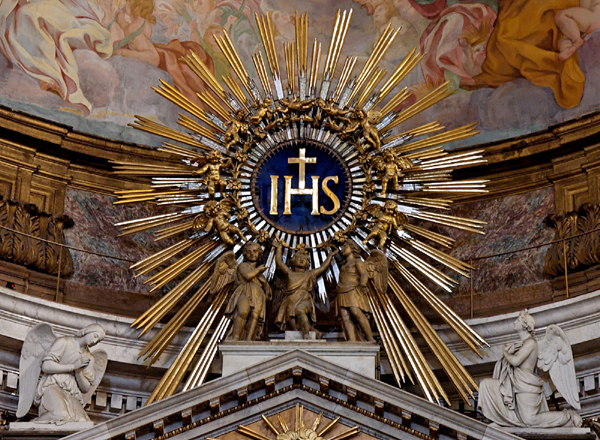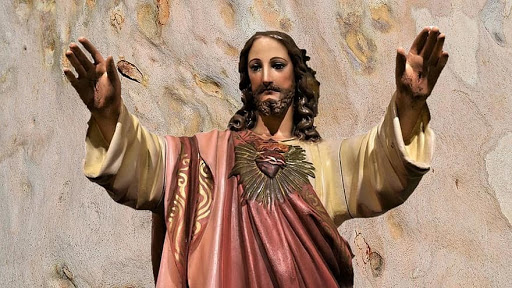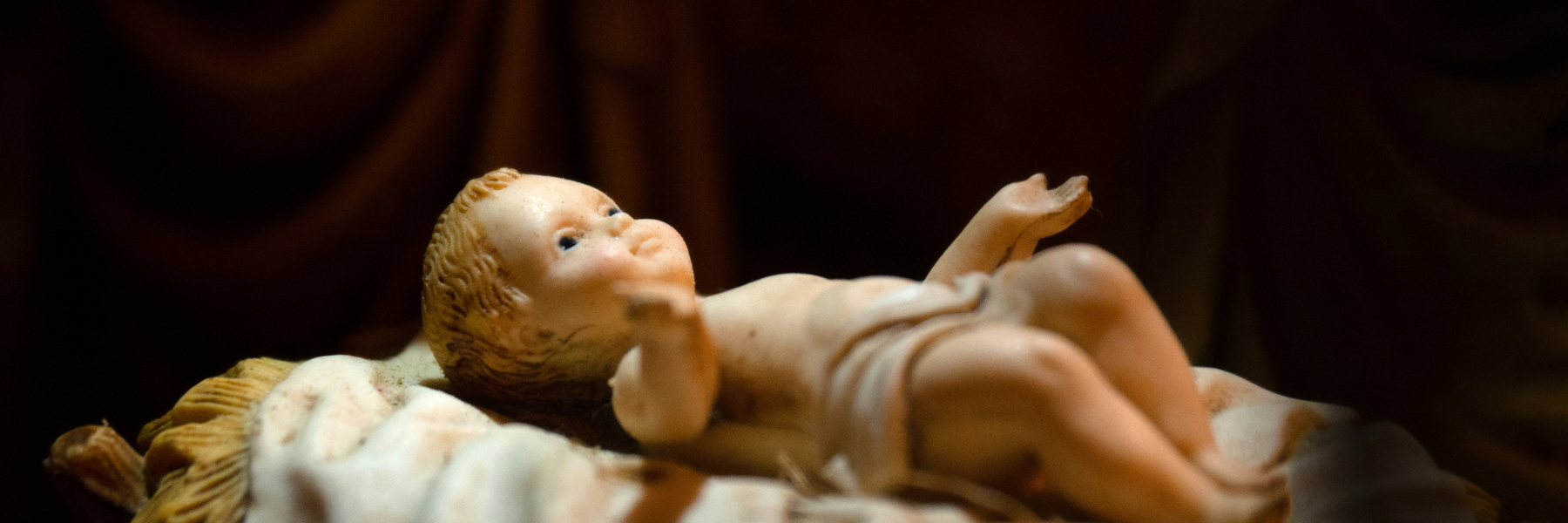

Church Dedications Each Month
The Liturgical Calendar of the Catholic Church gives shape and meaning to the year, allowing us to order our days more toward God. But the liturgical feasts are just the beginning. . .
The Liturgical Calendar of the Catholic Church gives shape and meaning to the year, allowing us to order our days more toward God. But the liturgical feasts are just the beginning.
Since the 16th century, the Church has assigned special devotions to each month of the year to help us grow closer to God, His Son, and His Saints. Read on to learn about the devotion and meaning given to each month, and how you can celebrate at home.

January: The Holy Name of Jesus
Major Feast: Feast of the Holy Name of Jesus (January 3)
We kick off the year by remembering the “...name that is above every name” (Phillipians 2:9). The Holy Name of Jesus contains immense power and majesty.
According to the Catechism of the Catholic Church: “The name ‘Jesus’ contains all: God and man and the whole economy of creation and salvation. To pray ‘Jesus’ is to invoke him and to call him within us. His name is the only one that contains the presence it signifies. Jesus is the Risen One, and whoever invokes the name of Jesus is welcoming the Son of God who loved him and who gave himself up for him.”1
How to celebrate: Pray the Jesus prayer, or make reparations to the sins against the Holy Name of Jesus by praying the Divine Praises every day this month.

February: The Holy Family
In February we honor the Holy Family. The Holy Family is the most perfect reflection of the love of the Trinity and sets before us the most perfect model of virtue for all Christian homes.
In the words of His Holiness Pope Leo XIII, "Nothing truly can be more salutary or efficacious for Christian families to meditate upon than the example of this Holy Family, which embraces the perfection and completeness of all domestic virtues."
How to celebrate: Pray with (or for) your family during this month. At the start of each day, ask Jesus, Mary, and Joseph for the grace to follow their example of love and selflessness.

March: St. Joseph
Major Feast: The Feast of St. Joseph (March 19)
Although not much is written in the Scriptures about the earthly father of Jesus and spouse of the Blessed Mother, we know that he was a holy and just man. He humbly accepts his role in salvation history and faithfully followed God’s will for him and his family.
St. Alphonsus Liguori is one of many saints who encouraged devotion to this holy man. He said: “We should, indeed, honor St. Joseph, since the Son of God Himself was graciously pleased to honor him by calling him father...If, then, the King of Kings was pleased to raise Joseph to so high a dignity, it is right and obligatory on our part to endeavor to honor him as much as we can.”
How to celebrate: Pray the Litany of St. Joseph and consider consecrating yourself to his care.

April: The Blessed Sacrament
Major Feast: Holy Thursday (when applicable)
The Eucharist is the source and summit of the Christian life; all of our works are oriented toward it. Jesus’ body, blood, soul, and divinity are truly present in a small host. When we receive the Blessed Sacrament we unite ourselves to God and receive the life and healing He longs to give us.
Saint Mother Teresa of Calcutta said: “The time you spend with Jesus in the Blessed Sacrament is the best time you will spend on earth. Each moment that you spend with Jesus will deepen your union with Him and make your soul everlastingly more glorious and beautiful in Heaven, and will help bring about everlasting peace on earth.”
How to celebrate: Spend time in Adoration or attend another Mass during the week in addition to your Sunday obligation.

May:The Blessed Virgin Mary
Major Feast: Feast of the Visitation (May 31)
Her “yes” at the Annunciation illustrates the Blessed Virgin Mary’s perfect humility, obedience, and openness to the Holy Spirit that we are called to imitate in our own lives. In becoming the Mother of God, she also became the Mother of the whole Church.
So, in the words of St. Francis de Sales: “Let us run to Mary, and, as her little children, cast ourselves into her arms with a perfect confidence.”
How to celebrate: Have a May Crowning; adorn a statue of the Blessed Mother with a crown of flowers or place a vase of flowers near her image.

June: The Sacred Heart of Jesus
Major Feast: Feast of the Most Sacred Heart of Jesus (Friday following Corpus Christi Sunday)
The Sacred Heart is a profound reminder of the humanity of our Lord and of His immense love for us. It is often depicted as a heart, bloodied and broken, but burning with Love. This image beautifully illustrates the great sacrifice that Christ made for you.
As Jesus said to St. Margaret Mary Alacoque: "Behold this Heart which has so loved men that it has spared nothing, even to exhausting and consuming itself, in order to testify its love."
How to celebrate: Pray Padre Pio’s go-to novena to the Sacred Heart before bed or begin the first Friday devotion.

July: The Precious Blood
Major Feast: Feast of the Most Precious Blood (July 1)
The Precious Blood of Christ is what redeemed us from our sin. St. Paul tells us that Jesus reconciled “to himself all things, whether on earth or in heaven, making peace by the blood of his cross” (Col. 1:20). It gives us life, cleanses us of our sins, and assures our eternal inheritance.
How to celebrate: Remember the “blood and water which gushed forth from the Heart of Jesus as a fountain of mercy for us,” by praying the Divine Mercy Chaplet daily at 3 pm.

August: The Immaculate Heart of Mary
Major Feast: Solemnity of the Assumption of the Blessed Virgin Mary (August 15); Feast of the Queenship of Mary (August 22)
The heart of Mary is full of love for God, and, because she is sinless, hers is the only human heart capable of loving God the way we were meant to. The image of the Immaculate Heart recognizes Mary's extraordinary holiness and the great love she has for her son that we are called to imitate.
How to celebrate: Keep the Immaculate Heart close to you by wearing the Miraculous Medal, which has an image of Our Lady’s Heart on the back.

September: The Seven Sorrows of Mary
Major Feast: The feast of Our Lady of Sorrows (September 15)
Mary’s Immaculate Heart is often depicted as pierced by seven swords, representing the sorrows that she experienced with and alongside her Son. In perfect obedience to God and His will, Mary consented to her Son’s passion and death, entering into his sorrow in a way only a mother can.
How to celebrate: Pray the Seven Sorrows Rosary or meditate with Luke 2:34-35 when Simeon prophesied the sorrows Mary would undergo.

October: The Holy Rosary
Major Feast: Feast of Our Lady of the Rosary (October 7)
The Rosary is one of the most powerful forms of prayer that the Church gives to the faithful; popes, saints, even the Blessed Mother herself have spoken on the importance of praying the Rosary. Like Padre Pio who said: “Love the Madonna and pray the rosary, for her Rosary is the weapon against the evils of the world today. All graces given by God pass through the Blessed Mother.”
It’s a simple but profound way to meditate on the life of Jesus and to grow closer to Mary who will always lead us to her Son.
How to celebrate: Pray the Rosary (or pray a decade of the rosary).

November: The Holy Souls in Purgatory
Major Feast: All Souls’ Day (November 1)
As Catholics, we believe that the Church is made up of the souls here on earth, the saints in heaven, and the souls suffering in Purgatory. The souls in purgatory cannot pray for themselves and need our prayers and sacrifices to enter fully into the Beatific Vision. November is a set aside for the faithful to remember and pray for these brothers and sisters of ours.
How to celebrate: Visit the cemetery and pray for the dead. Not only is praying for the dead a spiritual work of mercy, but the Church also offers a plenary indulgence for those who do this during the first week of November.

December: The Immaculate Conception
Major Feast: The Solemnity of the Immaculate Conception (December 8)
The Blessed Mother was called “full of Grace” by the angel Gabriel because she was first conceived without sin. As the Church prepares for the coming of Christ on Christmas day, meditating on the mystery of Mary’s immaculate conception can remind us of the saving work Jesus came to do through His Incarnation.
How to celebrate: Go to confession. This a great way to prepare for Christmas and give you the grace to imitate Mary’s virtues.
- Catechism of the Catholic Church, #2666



